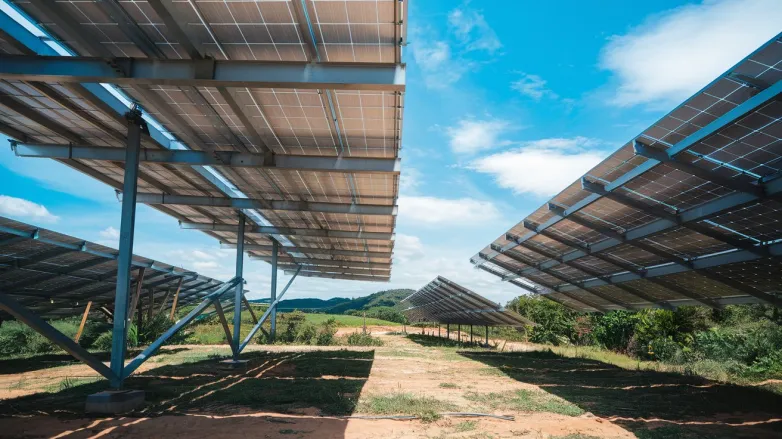Brazil's Sugarcane Yields Rise with Agrivoltaic Innovation
- Boost sugarcane yields and harness clean energy with agrivoltaics: Brazil's study reveals the dual benefits of solar panels in agriculture, optimizing growth and sustainability.

A recent study in Brazil's sugarcane belt reveals that agrivoltaics, the integration of solar panels with crop cultivation, can enhance sugarcane yields under specific conditions. The research highlights the dual-use potential of solar arrays, which can protect crops from extreme weather while generating clean energy. By optimizing row spacing, panel height, and tilt, researchers found that partial shading from panels can reduce plant stress and preserve soil moisture, leading to stable or improved yields, especially in areas with extreme heat or erratic rainfall.
However, the study emphasizes the importance of agronomy in design, as improper configurations can hinder crop growth and harvesting. Successful implementation requires collaboration between farmers and engineers to align solar panel setups with agricultural needs. Economic considerations, such as the cost of steel and foundations, must also be addressed to ensure projects are financially viable. Agrivoltaics offer additional benefits, including maintaining productive land use, supporting pollinator habitats, and providing on-farm resilience. The promising results suggest that with proper management, Brazil's sugarcane fields can effectively utilize sunlight for both crop and energy production.
How can agrivoltaics improve sugarcane yields and energy production in Brazil's sugarcane belt?
- Enhanced Microclimate Control: Agrivoltaics can create a more favorable microclimate for sugarcane by moderating temperature extremes and reducing wind speed, which can help in maintaining consistent growth conditions.
- Increased Water Efficiency: The shade from solar panels can reduce evaporation rates, leading to better water retention in the soil, which is crucial for sugarcane, especially during dry spells.
- Extended Growing Season: By mitigating the effects of extreme weather, agrivoltaics can potentially extend the growing season for sugarcane, allowing for more flexible planting and harvesting schedules.
- Energy Production Synergy: The dual-use of land for both energy and crop production maximizes land efficiency, providing a renewable energy source that can power local operations and reduce reliance on fossil fuels.
- Economic Diversification: Farmers can benefit from an additional revenue stream through the sale of solar-generated electricity, which can offset agricultural costs and provide financial stability.
- Biodiversity Support: The presence of solar panels can create habitats for pollinators and other beneficial species, enhancing biodiversity and potentially improving crop pollination rates.
- Resilience to Climate Change: By providing a buffer against climate variability, agrivoltaics can make sugarcane farming more resilient to the impacts of climate change, ensuring long-term sustainability.
- Research and Development Opportunities: The integration of agrivoltaics in sugarcane fields can drive innovation and research in both agricultural practices and solar technology, leading to further advancements in efficiency and productivity.
Also read

